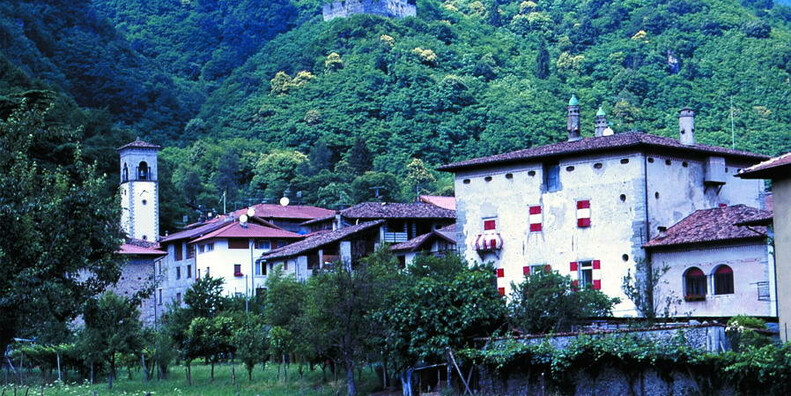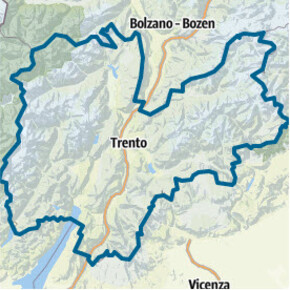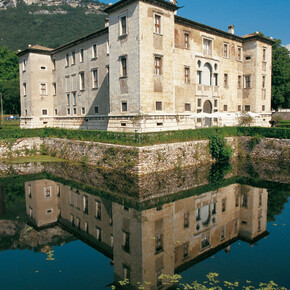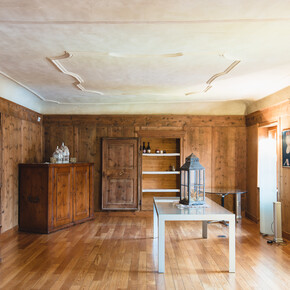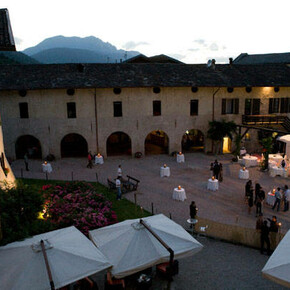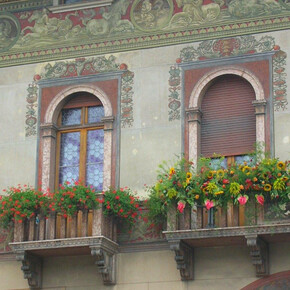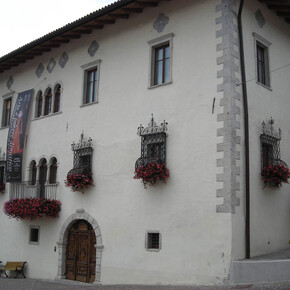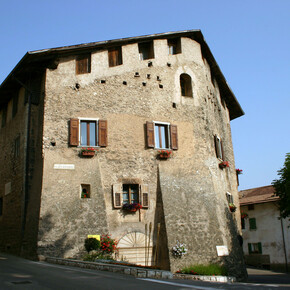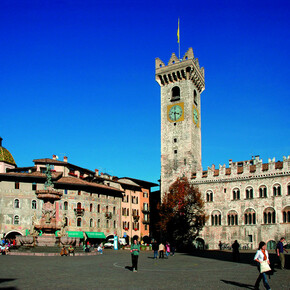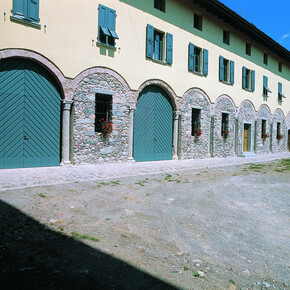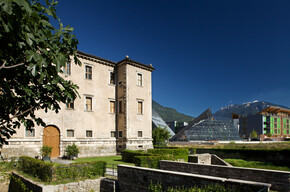Palazzo Bavaria
Palazzo Bavaria and Palazzo del Caffaro, the ancient prestige of the Lodrons in Storo.
Palazzo Bavaria, today property of some Lodrone families, was once the residence of the noble Lodron family. Then an isolated country estate, now it is surrounded by houses. The Palazzo was where the counts collected the tollage (dazio in Italian) for the incoming and outgoing goods between the earldom and the neighbouring Republic of Venice. This explains why it was known as the "palazzo della Muta" or "palazzo del Dazio". Anyhow, its structure is still proof of the importance of this ancient fortified palazzo, reconstructed in the16th century by Ludovico Lodron, who fought in the battle of Lepanto and whose name appears, together with that of his wife Beatrice, next to the dates 1585 and 1594. It is a two-storey, square-plan building on the roof of which stand high four cupola-shaped chimneypots, each one topped by a small, triangular metal flag. To the east and west short sections of the battlemented walls are visible, that most probably widely embraced the palazzo and the surrounding grounds. Up until a few years ago, above a door in the boundary wall the family's coat of arms and the words: "THIS IS WHERE THE TOLL IS PAID" were visible. On the southern side there is a portico with cross vaults, supported by a flight of identical columns.
Palazzo del Caffaro is another building that was once the property of the prestigious Lodron family. It is also known by the name of Palazzo Lodron Laterano and of Palazzo Graz. It actually consists in a complex of buildings because a church by the name of Santa Croce (now deconsecrated and used as multi-functional hall), a convent, the buildings used as stalls and by servants, a large kitchen garden that was once a flower garden are attached to the ancient residence. Reconstructed in the mid 16th century on top of more ancient remains, its structures and ornaments make it an interesting example of Italian Renaissance architecture. Inside, an elegant portico of slim granite columns is built around a vast courtyard. The columns are topped by capitals reminiscent of the Corinthian style. The portico supports an equally elegant renaissance-style loggia, it too supported by columns of composite style, all of which made of light-coloured marble. In the central section of the loggia stands the memorial monument of three Lodron bishops.

